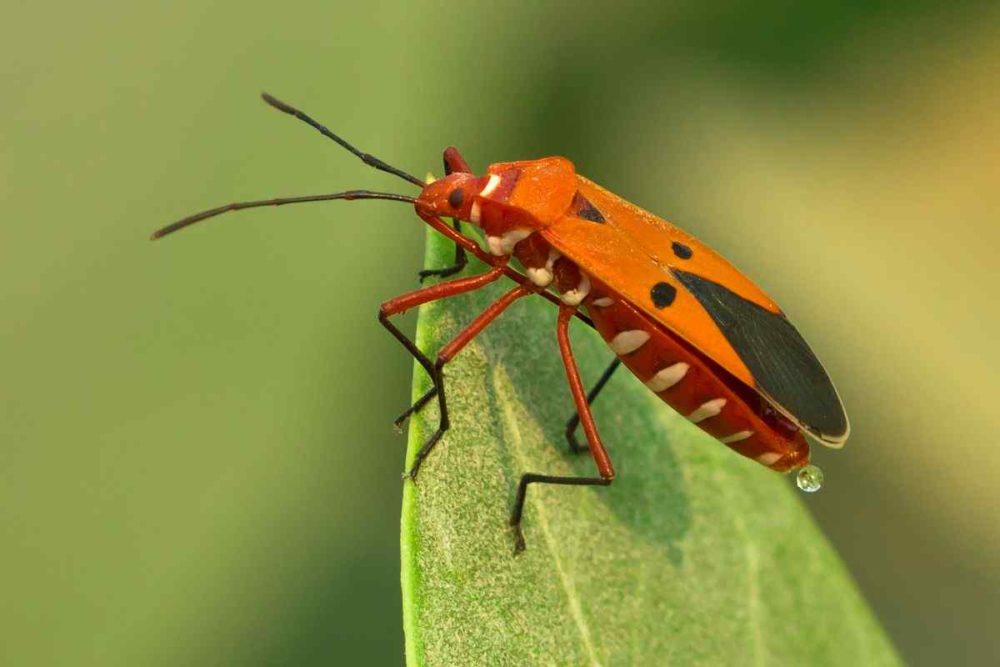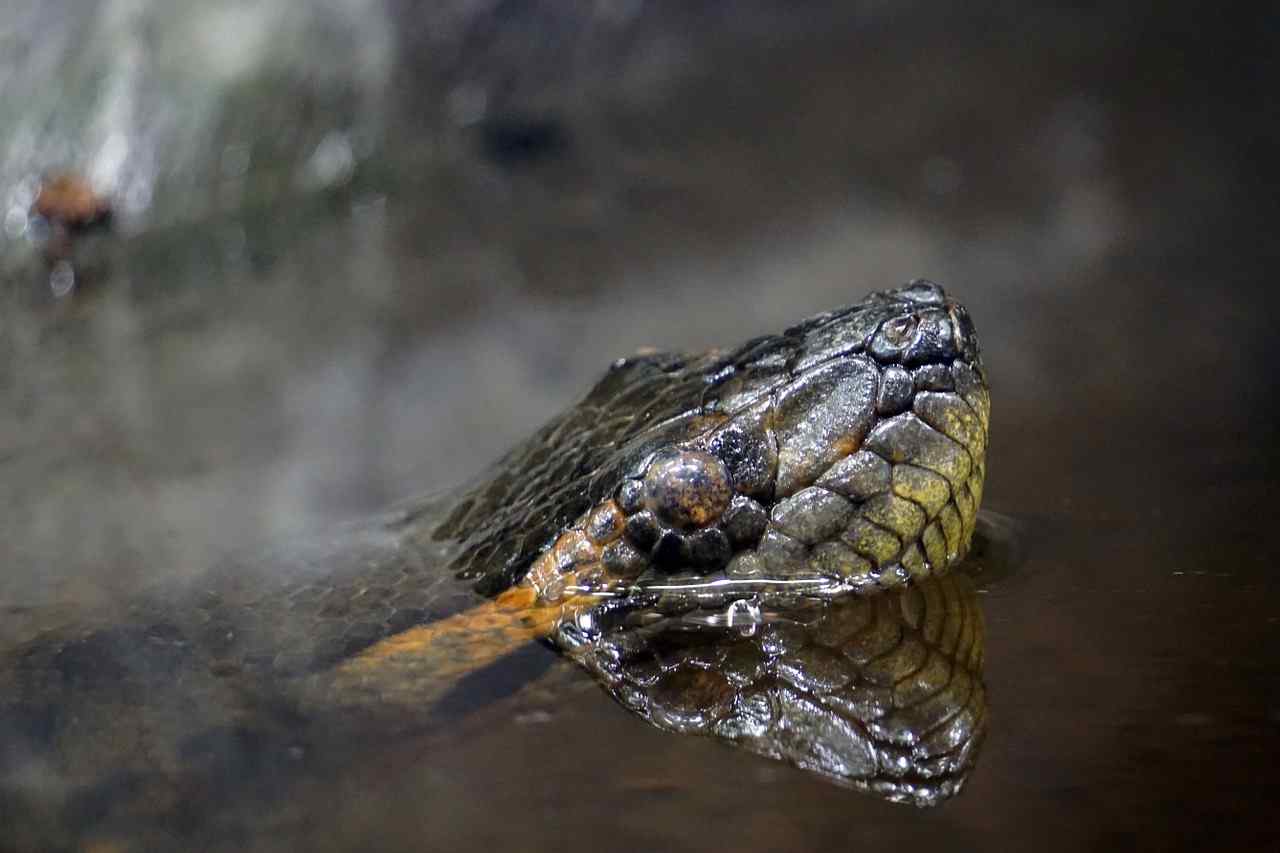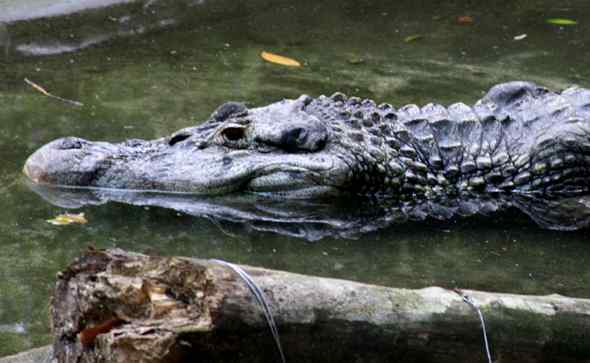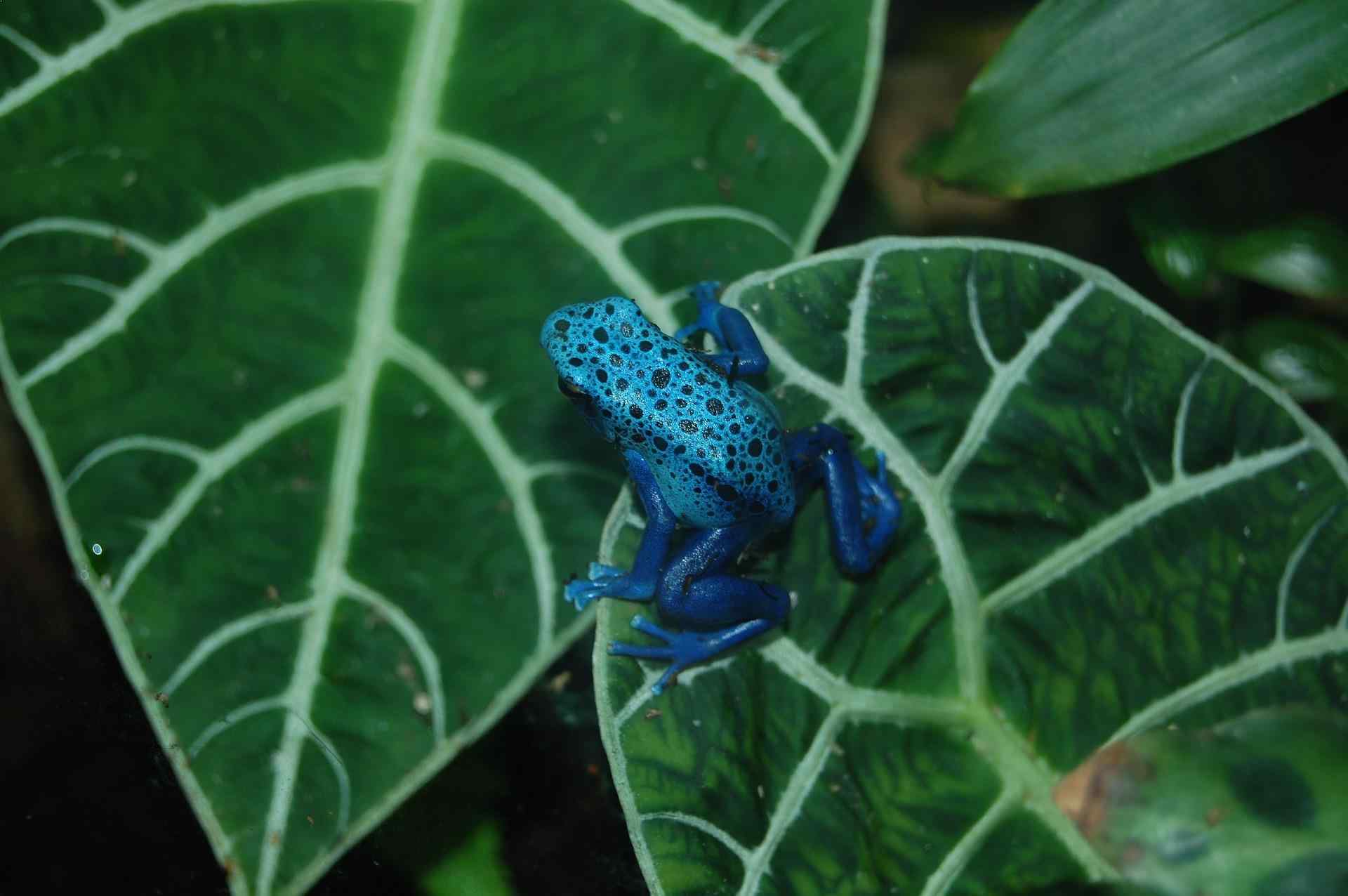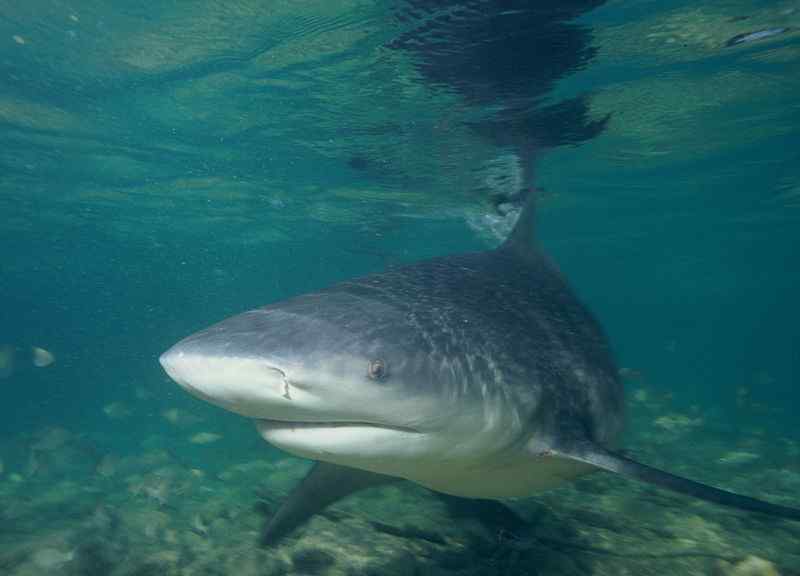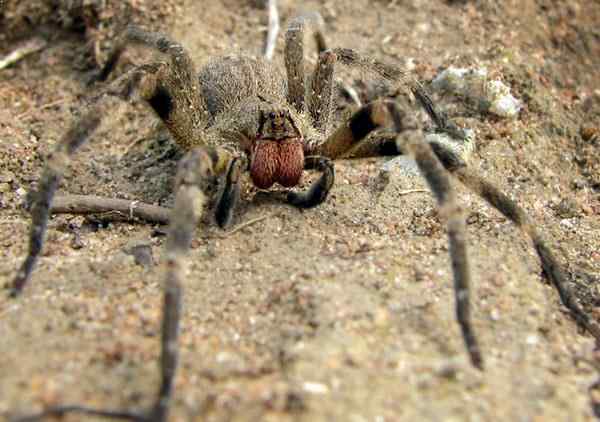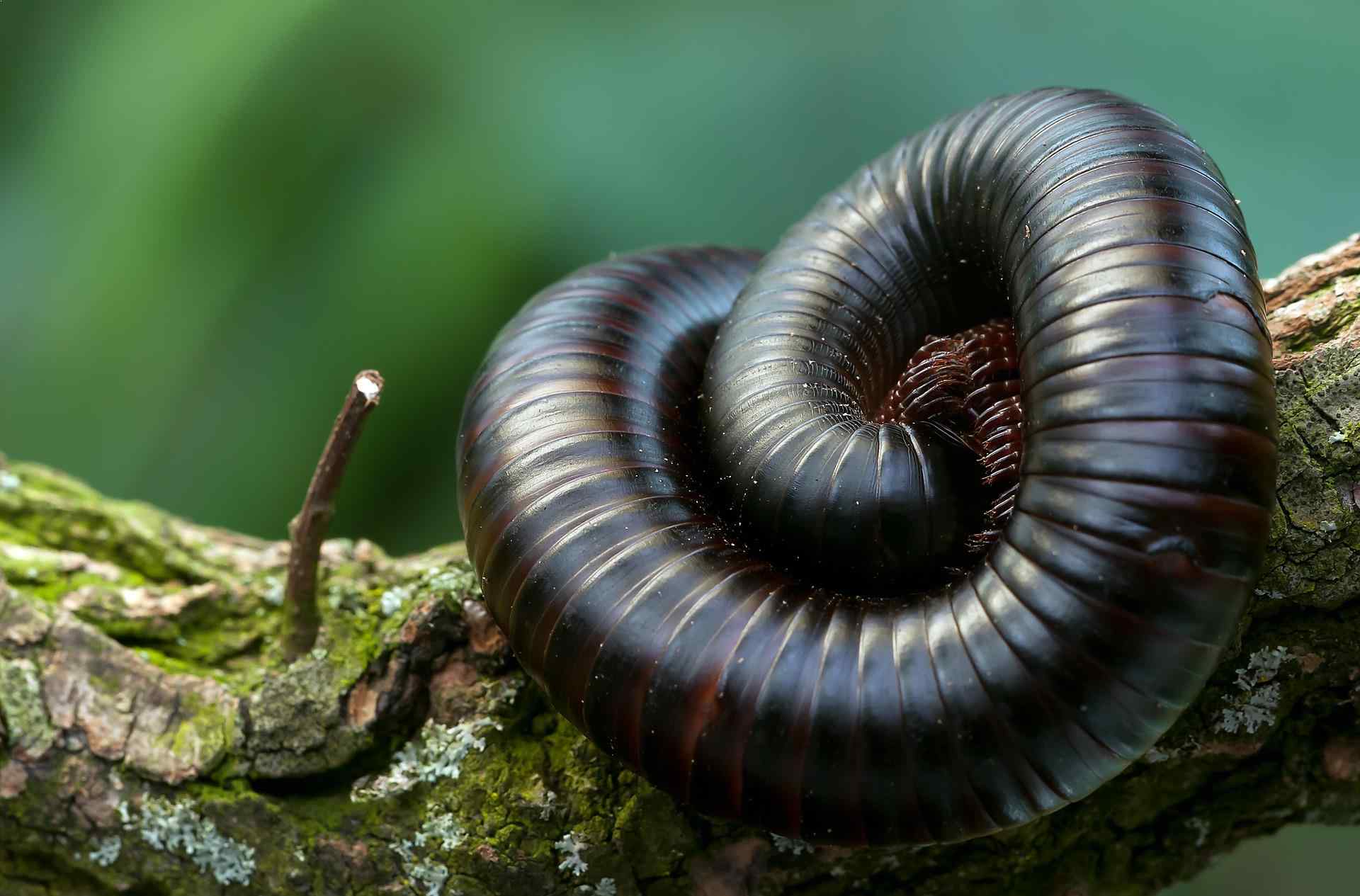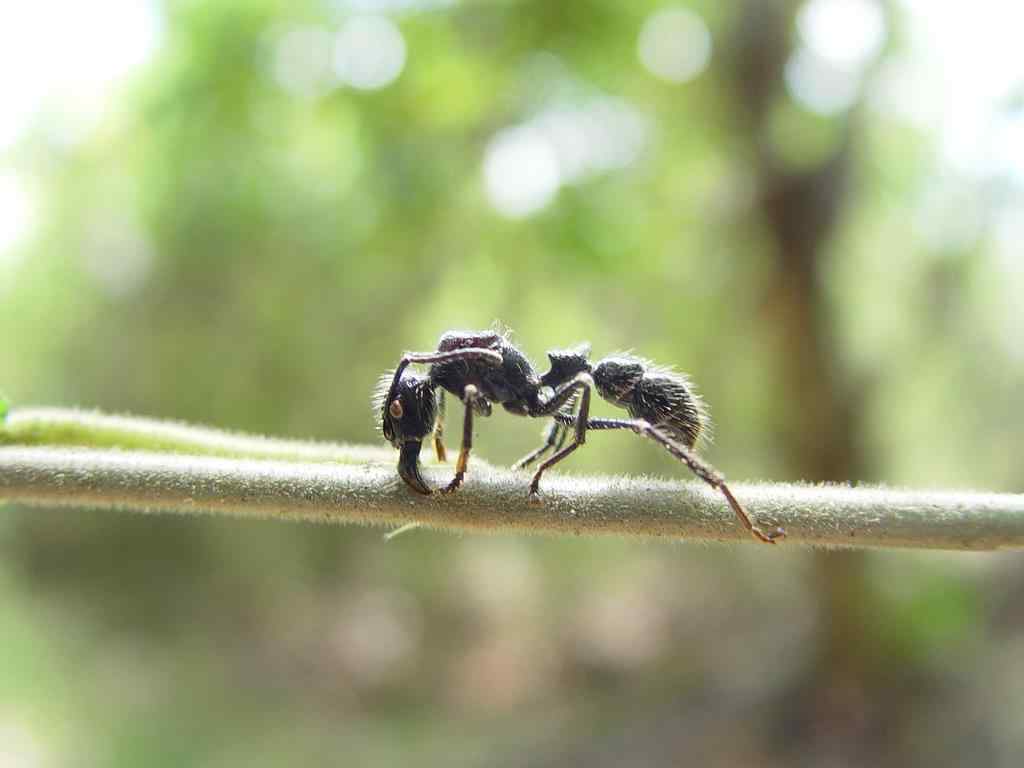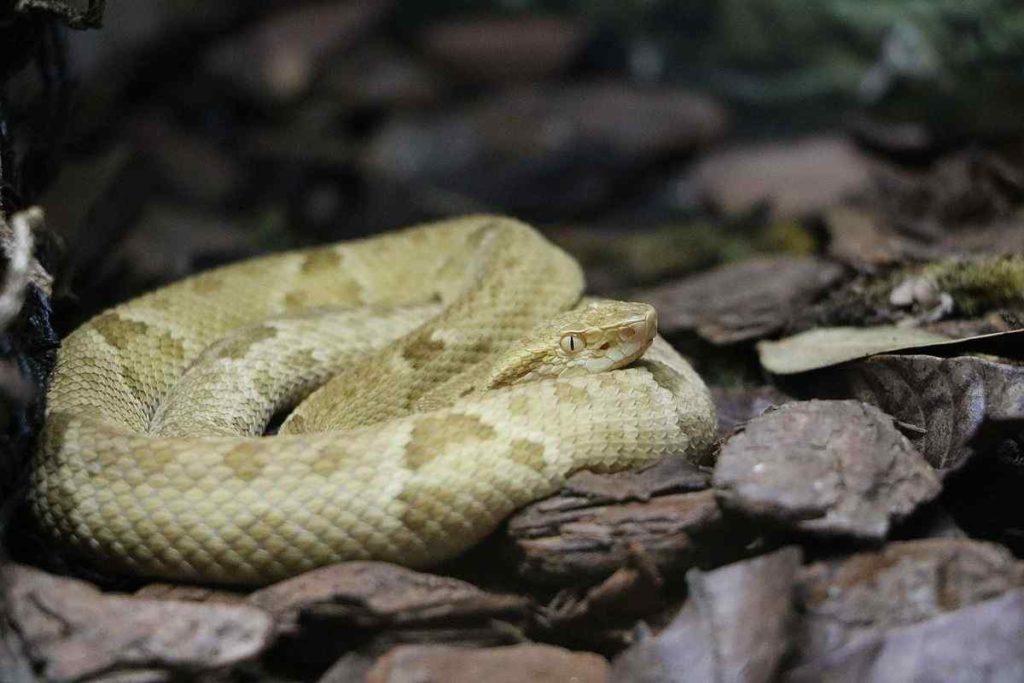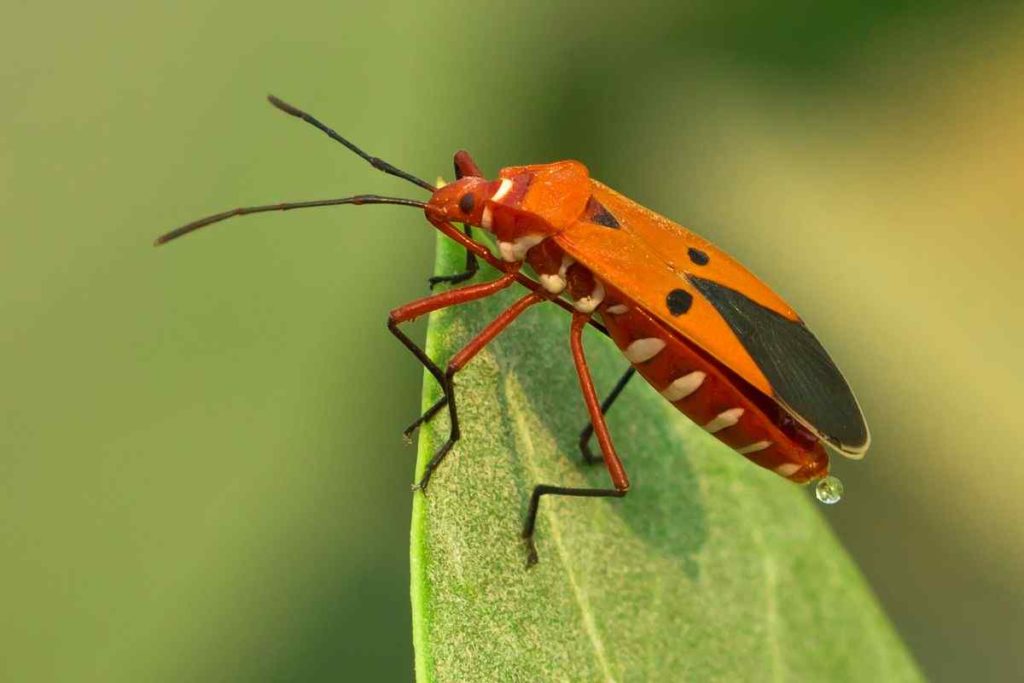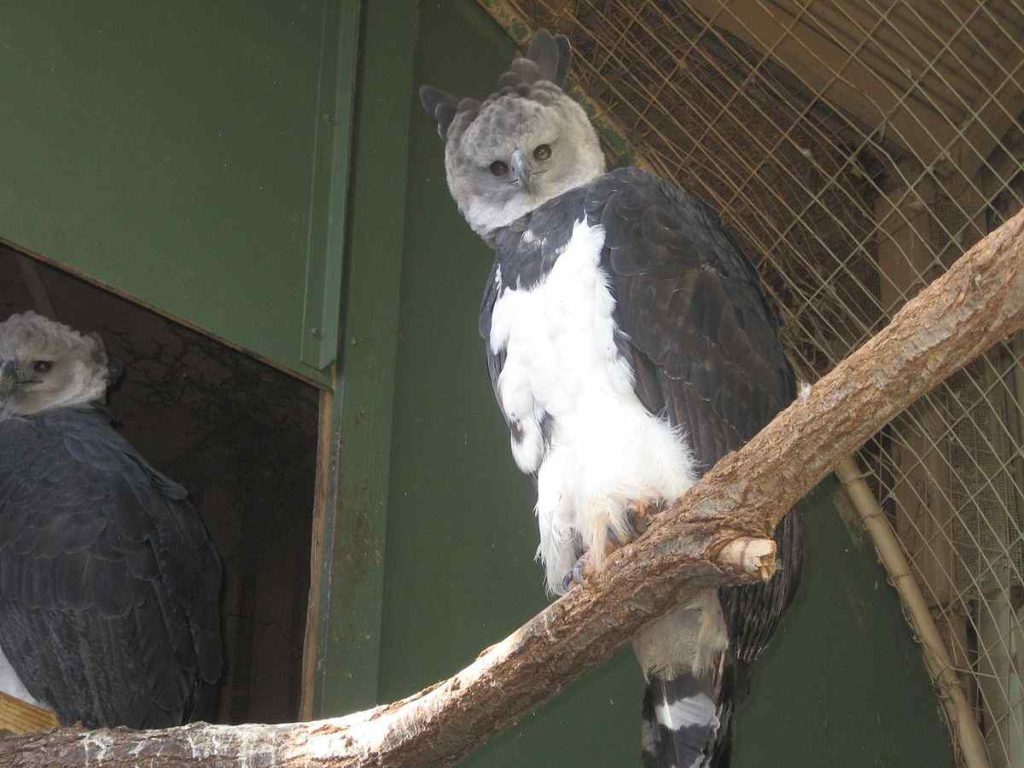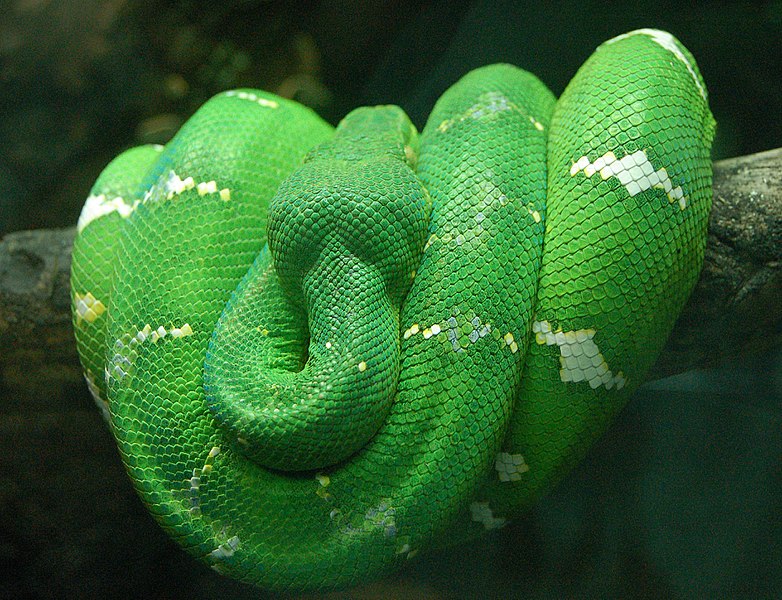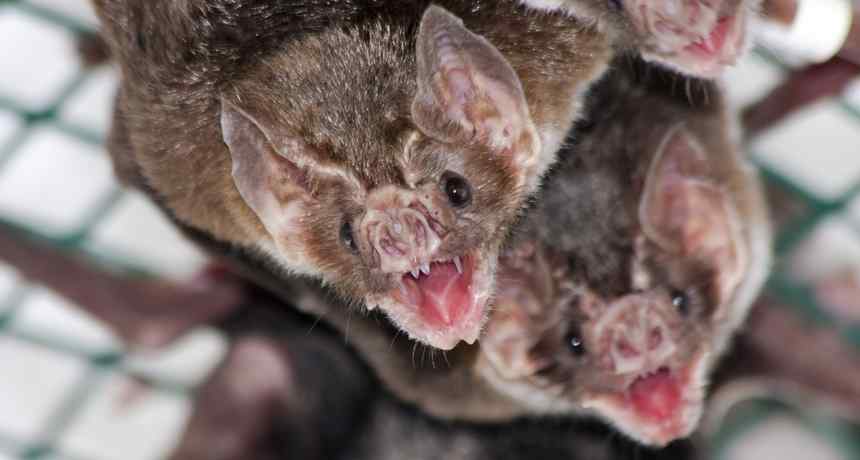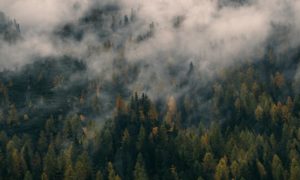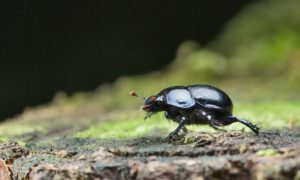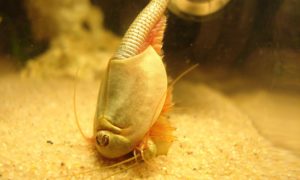In South America, spreading into nine countries is the Amazon rainforest – the largest rainforest in the world. It spans an estimated area of 55 lakh square kilometres and hosts a plethora of biodiversity including many species that have not been discovered and studied yet. There are few Australian animals that we will find only on that continent. The Amazon River, running through the forest supports the thriving life of Amazon rainforest animals and plants. These forests are known as the “lungs of the earth” because they absorb the largest amount of carbon dioxide on land and give out oxygen. These forests are also home to some of the most dangerous animals known to humans and here is a list of the 15 most dangerous Amazon Rainforest animals –
Amazon Rainforest Animals
1. Green Anaconda
Contrary to movies might want us to believe, anacondas are not poisonous and it is not their bite that makes them lethal. One of the largest snakes in the world, Green anacondas are the largest snakes on Earth and can grow up to 30 feet in length – two times the size of a giraffe. They live in water and can sneak up on the prey soundlessly and strike it with force, constricting it with their powerful body till it suffocates and dies. They then swallow the prey whole. They commonly hunt anything from wild boar, deer, capybaras and sometimes also jaguars and humans. You can also read about the most dangerous animals in the world.
Anaconda is also listed in non-venomous snakes in the world. Green anacondas spent most of their time alone, however, male species search for female ones for mating between the month of April and May. There can be scenarios where multiple green anaconda species pursue the same female. It is known as “breeding balls” where dozens of males wrapped around a single female and all attempting to mate. Sometimes Green anacondas show the feature of cannibalism where the female green anaconda species has been reported to eat smaller male anacondas.
Also Read: Top 10 Endangered Animals In The World
2. Black Caiman
It is an alligator found in the Amazonian basin and is one of the largest species in the world. This Amazon rainforest animal is a very adept hunter and kills its prey by moving towards it from underwater and then crushing it using its powerful jaws. It then drags the catch underwater till it suffocates. It kills all animals ranging from small fish, otters, dogs, and deer to jaguar and other caimans. Caimans can grow up to 6 meters in length and humans are at risk only from the very large ones.
Talking about the appearance, the body of black caiman covered with hard scales that act as an armour, however, asking colour can vary between olive green, grey, brown or black in colour. The species is white at the base and have bony ridges above its large eyes. They have an excellent sense of hearing and eyesight and equipped with strong molar teeth used for crushing of the food. The animal species is one of the important animals in their region because they keep a number of animals (their prey) under control. You can also read about animals that could dissapear forever
Image Source: Wikimedia
3. Electric Eel
This animal is not actually an eel but a fish that looks similar to an eel. It has three organs in its body that can generate five times more electricity than a regular plug point. It uses this electricity to shock and immobilize its prey before eating it whole. It also releases electricity as a method of defence to scare away the attacker. Humans are usually attacked by the eel if it is accidentally stepped on. Most deaths occur not due to the shock itself but due to the subsequent paralysis and drowning. This method of killing its prey has earned the eel a spot in this list of ten most dangerous Amazon rainforest animals.
The species has around 6000 cells also known as electrocyte hat produce electricity and can generate power of 600 volts that is approximately 5 times stronger than the electricity generated in the standard US wall socket. The shock is capable enough to knock down a horse instantly. It is capable of killing humans by two or three shocks, however, humans come in contact of eels very often. The species can live 15 years in the wild and 22 years in captivity. Here also you can read about colour changing animals around the world.
Also Read: Why is the Amazon Rainforest on Fire?
4. Jaguar
This large cat is native to South America and is an apex predator of the region. It lives alone in large territories similar to leopards or tigers found in India and hunts smaller land animals like monkeys, boars, and deer. It rarely comes in contact with humans, and when it does, it is usually because it is trying to attack livestock. Though attacks a rare, this cat is a dangerous animal due to its speed, stealth, strong jaw and sharp teeth that can pierce even the shells of turtles and the human skull. Their numbers are declining, however, due to loss of habitat and hunting. It has shades of Tiger which is one of the apex predators in the world.
It is also considered as one of the strongest animals on planet Earth. The species prevents overgrazing of vegetation by keeping its prey population in control and one of the most important Amazon rainforest animals in human culture because they are often seen in stories, songs and prayers of indigenous people. They love to eat monkeys, crocodiles, deer, peccary, sloths, fish, frogs and anything that they can catch. Jaguars are solitary animals who love to live and hunt alone, however, this is not applicable during mating season.
Also Read: 12 Deadliest Insects In The World
5. Piranha
Like the anaconda, the movie industry also has a fascination with the piranha, making it a familiar animal. And here too, the movies got it wrong. The red-bellied piranha, the most dangerous of all species, is a scavenger and usually eats dead animals. It is known to attack live animals only if it feels threatened or if food is scarce in the area. Humans have been attacked by piranhas, but these attacks do not result in death, merely injuries due to the sharp teeth of the fish. Piranhas show cannibalistic behaviour and are known to eat other members of their species. It is also one of the deadliest fishes in the world.
Talking about the appearance, they have a silver body covered in red patches that served as a camouflage in the muddy waters. The species can grow up to 5.5-17 inches in length and weighs approximately 7.7 pounds. The pointed and sharp teeth of Piranha are arranged in a single row and they will bite through hook made of silver. The jaw bone is strongest in Piranha and capable enough to crush a human hand in 5-10 seconds. Local people use the teeth of Piranha to make weapons and other tools. Similar to sharks, piranhas are also equipped with a special organ that can sense blood in the water. They live up to 25 years in the wild and 10-20 years in captivity.
Also Read: 10 Most Colorful Animals In The World
6. Poison dart frog
As the name suggests, this Amazon rainforest animal is a brightly coloured frog that secretes poison from glands on its skin. This poison is highly toxic and causes heart failure if it enters the body in large amounts. The golden poison dart frog is a rare species but is the most poisonous animal because as a single frog species it can kill twenty adult humans. Some tribes in the Amazon rainforest are known to use the poison from this frog to coat the tip of their arrows, used to hunt other animals.
Let me tell you one thing there are few Nocturnal Animals that are only active in the night. Glass Frog is seen in Amazon rainforest is one of the transparent animals on planet Earth. They are mostly seen on trees as well as under leaves and logs of the forest. The species mostly attacked invertebrates especially certain ant species that help to build up strong poison for the frog. Because of depleting rainforest Poison Dart Frogs are at risk and the Blue Poison Dart Frog is the most endangered due to the pet-shop market.
7. Bull Shark
This shark is one of the top three most dangerous shark species and frequently attacks humans that venture into its territory. It lives in the muddy waters of the river and hunts other aquatic animals like fish, dolphins, and snakes. Since it swims into shallow, muddy water, people are unable to see it and, if they come too close, the shark attacks them. The bite of the shark can prove fatal because it drags its victims down into the water and they either drown or die due to blood loss. The species can grow up to 7 feet long, however, females have been seen growing over average 7.8 feet long and weigh 285 pounds.
The male species is smaller as compared to females and weighs approximately 209 pounds. They are one of the shark species that can grow in both saltwater and freshwater. The bull shark is able to switch between saltwater to freshwater and vice versa because they have half the concentration of salt in their blood than that of the water around them and Talking about other shark species, they have the same concentration of salt in there as compared to water around them. The bull shark will able to survive even in if the water level is only 2 ft and that is the reason they often come in contact with humans. Also, female bull sharks prefer to give birth in shallow water because by this they will prevent their young from getting eaten by the bigger sharks.
8. Brazilian Wandering Spider
The first insect to make it onto the list of most dangerous Amazon animals, this spider is native to the Amazon rainforest and has some of the most deadly venoms in the world. It is a ground-dwelling spider and hunts at night. It may sting humans who venture too close and the venom causes sharp pain and may eventually cause paralysis. The spider with the deadliest venom in the world distributed all along the jungle floor and hence the name, however, during daytime they hide under rocks and in crevices but lobe to thrive in places that are dark and moist.
Also, they are mostly seen in where humans have undisturbed items lie clothes they don’t wear or piles of wood or any items stored in the closet or the garage, therefore humans need to be careful where they are known to live. One of the most aggressive types of Spiders fight with other spiders over territory if the population is high in that region.
Image Source: Wikimedia
9. Amazonian Giant Centipede
As the name suggests, this centipede is a giant – it grows up to 30 centimetres. It is an expert predator and kills small animals like spiders, mice, small birds, bats, lizards, and snakes. It is not poisonous but preys by coiling itself around the prey and eating it while it slowly dies. Though it cannot kill humans, the bite causes intense pain, fever, and weakness. Nevertheless, it a fierce and dangerous Amazon rainforest animal. The species have powerful jaws that can break the skin very easily and inject a very painful venom.
Talking about the appearance, the whole body is divided into 23 parts each with their own pairs of legs. Amazonian Giant Centipede don’t breathe through the mouths instead they have small holes in the side of each segment that enable them to take oxygen to keep them alive. They are one of the fast runners because they are almost blind and love to eat insects, tarantulas, small lizards, frogs, small birds, small snakes, rodents and even bats. The species is thoroughly distributed throughout South America and on a few islands of the Caribbean.
Also Read: Why Amazon Rainforest Are So Important? & Why We Should Care?
10. Bullet Ant
This tiny ant – that grows to about 2 centimetres – gets its name from its painful bite that has been compared to being shot by a bullet. It also injects venom into the bite and can kill small animals. These ants hunt in groups and can paralyze or kill large animals by many bites. To humans, the bite is not fatal but causes a lot of pain and may lead to temporary paralysis of the area surrounding the bite.
It has the most painful insect bites in the world. The species has one of the most painful stings of all insects in the world and their sting contains a neurotoxin. It is located on the ant’s abdomen and can be 1-3 mm long. They are mostly located in the Rainforest spanning from Nicaragua to Paraguay, however, nests in shrubs, trees and in the ground.
11. Lancehead Pit Viper
Also known as the golden lancehead is a poisonous pit viper species mostly seen off the coast of São Paulo state, in Brazil. It can be recognized by the light yellowish-brown colour of its underside and the head shape that is characteristic of the genus Bothrops. The species can grow upto a length of 70 cm, however, sometimes it is also seen to reach 118 cm. There are different colour combination such as a pale yellowish-brown ground colour that is overlaid with a series of dorsal blotches that may be triangular or quadrangular or opposite along the dorsal median.
Image Source: Wikimedia
12. Assassin Bug
The member of the order Hemiptera can be seen in approximately 6600 species mostly seen in different parts of the world and almost on all continents. The size depends on the species and can range from 0,04 to 04 inches in size. Talking about the appearance, the colour and shape of the body are also dependent on the species. Some of them are totally brown or black, however, others can be bright with specific markings on their body. The average lifespan of the species is between one and two years in captivity.
Image Source: Wikimedia
13. Harpy Eagle
The neotropical species of the eagle also known as the American harpy eagle in order to distinguish it from the Papuan eagle which is sometimes known as the New Guinea harpy eagle or Papuan harpy eagle. This is the most powerful raptor found in the Amazon rainforest animals and also among the largest extant species of eagles in the world. The species were mostly seen in the tropical lowland rainforests in Central America. Also, in Brazil, the harpy eagle is also known as royal-hawk. The harpy eagle is the national bird of Panama and is depicted on the coat of arms of Panama.
Image Source: Wikimedia
14. Tree Boa
The tree boa is a medium-sized constrictor that is mostly seen in green to greyish-green in colour. As the name suggests, it mostly hunts on trees only, however, it is less arboreal than most other boa types. There are a heat sensitive pits situated around its mouth that are used to seek prey in complete darkness. The snake species has two colour variations making the snake to camouflage in its environment.
15. Vampire Bat
You all must be aware that bats are the only mammals that can fly, howvever, vampire bats have an even more interesting distinction, they are the mammals that can only survive on blood. Also, the species used to live in places of complete darkness commonly in caves, old wells, hollow trees, and buildings. The nocturnal creatures are most active in the early night. The female ones form associations with other bats that can last for many years. The only species of bats that can ‘adopt’ another young bat if something happens to the bat’s mother.
Image Source: Wikimedia
So the next time you decide to venture into the Amazonian rainforest, be wary of these dangerous Amazon rainforest animals. These are the 10 dangerous amazon rainforest animals. Do post your comments.

